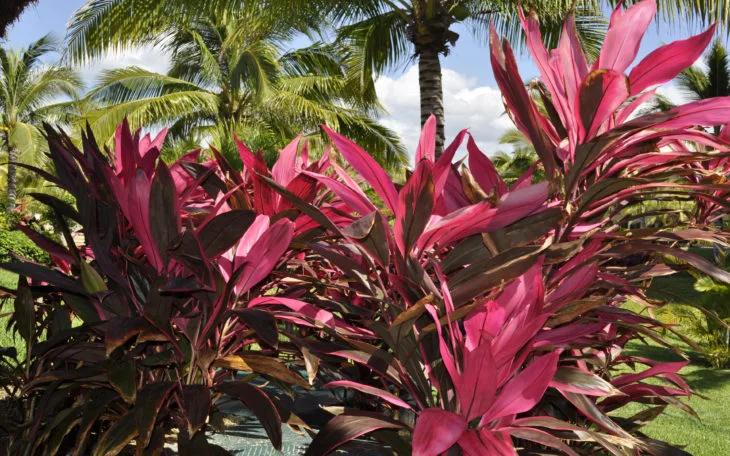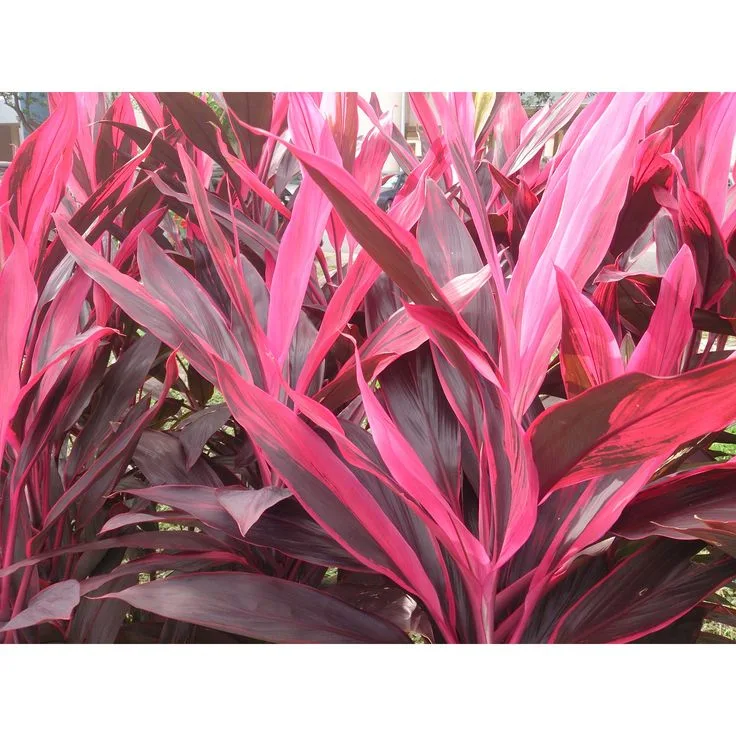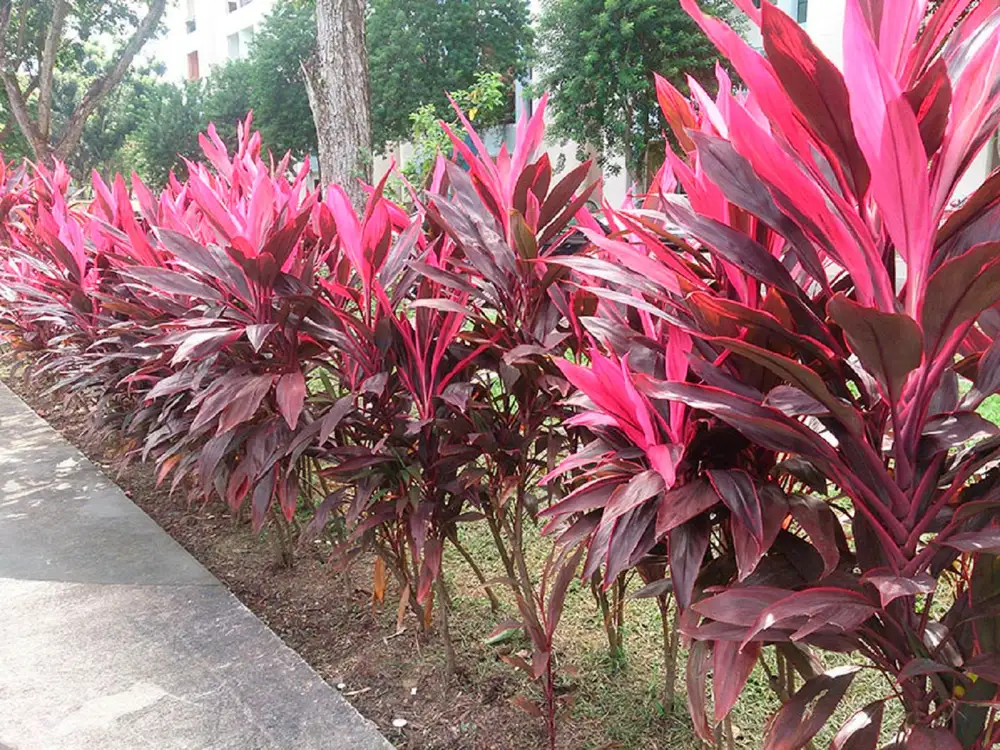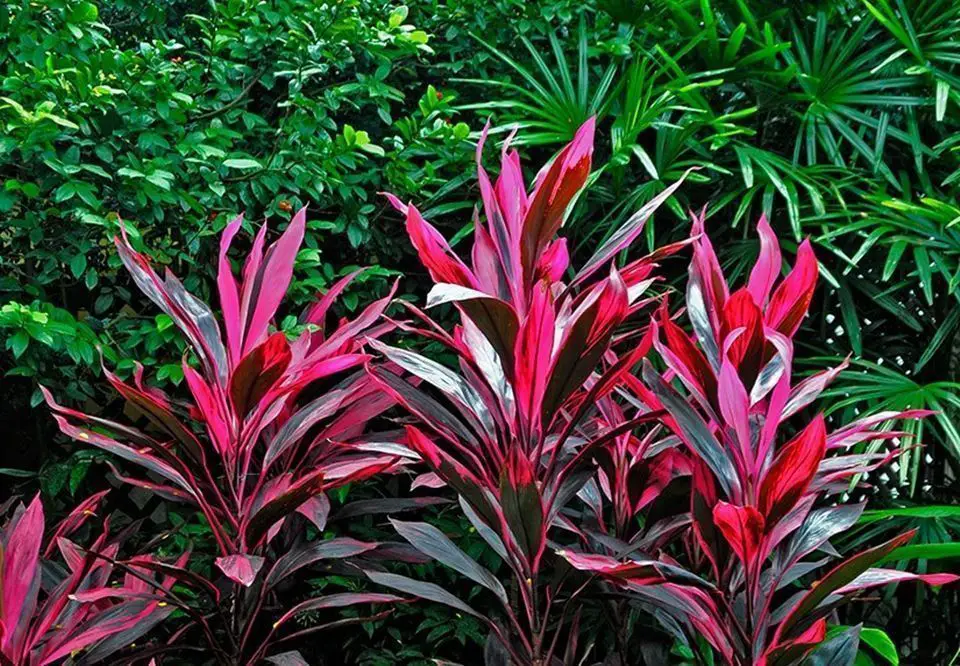INDEX
Presentation
The Venus Coconut (Cordyline fruticosa), also known as Red Dracena, is an exotic plant that adds a tropical touch to any garden or indoor environment. Originally from Southeast Asia and the Pacific Islands, this evergreen shrub is prized for its long, arching leaves, which display a varied palette of colors, including vibrant green, deep red and even shades of purple. Its elegant appearance and easy adaptation to different conditions make it a popular choice for landscaping, adding a touch of exoticism and sophistication to green spaces.
The Meaning of the Venus Coconut
In addition to its visual beauty, the Venus flytrap carries symbolic meanings. In some cultures, the plant is believed to represent good luck, prosperity and spiritual protection. Its imposing presence and lush foliage are celebrated not only for their striking aesthetics, but also for conveying a sense of vitality and renewal. Growing the Venus Coconut is not just an aesthetic decision, but a choice that invites good energy and a touch of tropical nature into the environments it inhabits.
| Common Name | Venus Coconut |
|---|---|
| Botanical Name | Cordyline fruticosa |
| Family | Asparagaceae |
| Type of Plant | Evergreen shrub |
| Adult size | Up to 3 meters high |
| Solar Exhibition | Filtered sunlight in full sun |
| Soil Type | Well-drained, rich in organic matter |
| Soil pH | Slightly acidic to neutral |
| Flowering Season | Generally does not flower |
| Color of Flowers | Insignificant flowers |
| Native Area | Southeast Asia, Pacific Islands |
| Toxicity | Potentially toxic to pets |

How to Care for the Venus Coconut
Light
Success in growing the Venus Coconut begins with the right choice of light. This plant adapts well to environments with filtered sunlight in full sun. In warmer areas, providing partial exposure can help protect its sensitive leaves from the sun’s intense rays.
Soil
The ideal soil for the Venus flytrap is one that offers good drainage and is rich in organic matter. Make sure you choose a substrate that allows water to drain away properly, avoiding the build-up that can lead to root problems.
Water
Water the Venus coconut tree regularly, keeping the soil slightly damp. Avoid waterlogging, as excess water can lead to root problems. In hotter climates, it may be necessary to increase the frequency of watering.
Temperature and Humidity
This plant thrives in moderate to hot temperatures. Make sure you protect the Venus flytrap from extreme temperatures. As for humidity, it appreciates wetter environments, but can adapt to normal humid conditions.
Fertilization
Fertilizing is essential to maintain the vitality of the Venus flytrap. Use a balanced fertilizer during the growing season, following the manufacturer’s instructions. Avoid over-fertilizing to prevent possible damage to the plant.
By following these care guidelines, you will ensure an environment conducive to the healthy and lush flowering of the Venus coconut tree.

How to Make Venus Coconut Saplings
Growing seedlings of the Venus Coconut is an exciting way to expand the presence of this exotic plant in your garden. Start by selecting healthy, mature stems. Cut them into segments of approximately 15-20 centimeters, ensuring that each seedling has a few nodes. Plant these segments in a light, well-drained substrate, keeping them slightly moist. After a few weeks, the cuttings will develop roots and be ready to be transplanted to their permanent locations.
How to Plant the Venus Coconut
Proper planting is crucial to the success of the Venus Coconut Tree in its new home. Choose a site with good drainage and adequate sun exposure. When transplanting seedlings or established plants, dig a hole slightly larger than the root ball and position the plant flush with the ground. Complete the planting, watering well to aid establishment. Avoid planting too deeply and over-compacting the soil around the base of the plant. This initial care will provide a solid foundation for the healthy growth of the Venus flytrap.
Most Common Pests and Diseases
When growing the Venus Coconut, it is important to be aware of the challenges that can arise. Some common pests and diseases include:
- Bugs: Insects that feed on the sap, causing damage to the leaves.
- Mites: Small arachnids that can create webs on leaves.
- Leaf spots: Usually caused by fungi, manifesting as spots on the leaves.
- Root rot: The result of excess moisture, leading to root rot.

Curiosities and Myths
In this section, we’ll dive into the fascinating peculiarities of the Venus Coconut (Cordyline fruticosa), debunking some myths that may surround this unique plant.
Curiosities:
1. Variety of Colors:
The Venus flytrap is known for its diversity of colors, displaying vibrant shades of green, red and even purple. Each variety offers a unique palette, adding an exotic touch to the scenery.
2. Pest resilience:
This plant demonstrates remarkable resilience against common pests, making it a robust choice for gardeners. Its dense leaves and hardy nature contribute to its ability to resist unwanted invaders.
3. Use in Traditional Medicine:
In some cultures, extracts from the leaves of the Venus flytrap are used in traditional medicine to treat various conditions. Studies into its medicinal properties are ongoing, revealing its potential beyond the ornamental aspect.
Myths Debunked:
1. Mosquito repellent power:
Myth Debunked: Despite its unique properties, the Venus flytrap is not proven to be effective as a mosquito repellent. While its leaves may have some beneficial compounds, it does not replace traditional methods of insect control.
2. Extreme Resistance:
Myth Debunked: Although hardy, the Venus flytrap still requires specific care. Ignoring its needs can lead to health problems, showing that even robust plants need proper attention.
By exploring these curiosities and debunking myths, the journey of growing the Venus Coconut becomes an enriching experience, full of fascinating nuances.

Conclusion
Throughout this guide, we explore the many facets of the Venus Coconut Tree (Cordyline fruticosa), from its elegant presentation to essential care and debunked myths. This remarkable plant, with its vibrant leaves and variety of colors, adds a tropical touch to any space, making it a popular choice for landscapers and gardening enthusiasts.
To recap, we learned about the importance of providing the right amount of light, well-drained soil, moderate watering and attention to common pests. We discovered fascinating curiosities, such as its diversity of colors and its potential use in traditional medicine. By debunking myths, we understand that, although hardy, the Venus Coconut still requires specific care to thrive. By growing this exotic plant, we are not only adding a touch of elegance to our environment, but also participating in a botanical experience that connects us to nature in a unique way. Growing the Venus flytrap is more than a gardening activity; it’s an invitation to appreciate the vibrant beauty and remarkable resilience of this enchanting plant.
Frequently Asked Questions
What is red dracaena?
The Red Dracena, scientifically known as Cordyline fruticosa, is an exuberant and vibrant ornamental plant. Originally from Southeast Asia and the Pacific Islands, this plant, also called the Venus Coconut, stands out for its long, colorful leaves that can vary from shades of green to deep red and purple, adding a tropical touch to indoor and outdoor environments.
How to care for the Venus Coconut plant?
Proper care of the Venus coconut tree is essential for its healthy flowering. This plant thrives in locations with filtered sunlight in full sun, requiring well-drained soil and moderate watering. Maintaining an environment with adequate humidity, especially in warmer climates, and providing balanced fertilizer during active growth are recommended practices. In addition, keeping an eye out for common pests and occasional pruning contribute to the plant’s vitality.
What is cordyline Fruticosa used for?
Cordyline fruticosa, popularly known as the Venus coconut, is mainly used as an ornamental plant due to its exotic beauty. As well as adding aesthetic value to gardens and indoor environments, the plant is also exploited in some cultures for its potential use in traditional medicine. Studies are underway to better understand its medicinal properties. However, its main role lies in its ability to create attractive and vibrant environments, providing a tropical atmosphere wherever it is grown.







